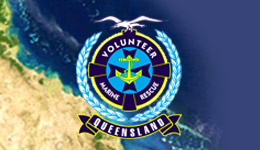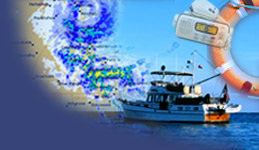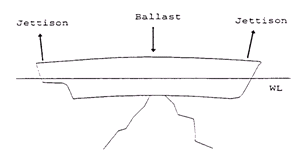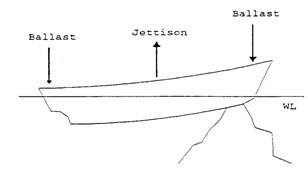Monitor and Control Compliance with Applicable Maritime Legislation | Stranding of Vessel |
 |
When a ship goes aground, the initial reaction on the bridge is to back down using the engines. Before attempts are made, consideration should be given to:
- Depth of water
- Sea floor composition
- Possible damage to propellers and hull
Attempts SHOULD NOT be made to refloat the ship under her own power if wind and sea conditions indicate the possibility of the ship working harder aground, pounding, or broaching to sea.
Master’s Responsibilities
In most stranding cases, the following considerations will ordinarily constitute good procedure:
Anchors to Seaward
Anchors to seaward should be quickly laid if possible to prevent the ship from working further ashore.
Investigate for Damage
A careful investigation should be made to sound all voids, check fuel tanks for leakage and examine the interior of the hull for signs of structural damage.
Determine Tonnes Aground
Determine displacement prior to grounding using daily draft report and Draft Diagram and Functions of Form. Read drafts after grounding and determine new displacement. The difference is the amount of tons aground.
Kedging
Ground tackle should be rigged and kedge anchors laid seaward as quickly as possible. This will help to keep the ship from kedging.
Take Soundings
The ship's boat should be launched to take soundings around the hull, determining the slope and nature of the bottom. These soundings should be continued in the direction toward which the ship is to be hauled off, in order to locate rock formations, coral ledges, or other under water obstructions. Currents which may effect the ship as she comes off should be noted.
Check for Hogging/Sagging Stresses
The drafts are also checked to ensure that the ship is neither hogging nor sagging. If the ship is aground at one end, sagging stresses are increased, resulting in the need to remove weight amidships and relocate it at the bow and stern. If aground on a ledge or pinnacle amidships, hogging stresses are increased. Weight should be removed from the bow/stern and relocated amidships. Irregular rock or coral formations or sharp changes in gradient produce concentrated pressures that can crush hull plating and result in flooding. This damage can be intensified if the hull works or shifts position.
Hogging Situation |
Sagging Situation |
Salvage Assistance
A request for salvage assistance should be made immediately, not delayed while refloating attempts are made. Early mobilisation and dispatch of salvage assistance might mean the difference between success and failure of the salvage operation. When a request for salvage assistance is made, the following information should be provided:
- An accurate position of the grounding site, including latitude and longitude, applicable chart numbers, and means of fixing the position.
- Ship’s draft at last port and estimated time of stranding.
- Drafts forward, amidships, and aft, following stranding with time taken and the state of tide.
- Soundings along the ship from bow to stern, corrected to the datum of the chart area.
- Course and speed at the time of grounding.
- Ship's heading after grounding with details of changes.
- Liveliness of the ship.
- Weather conditions, to include: wind direction and velocity, current weather at the grounding site, and any weather forecasts.
- Sea and ocean current conditions, to include: direction and height of seas and swells.
- Extent and type of damage to the ship.
- Location of grounding points and estimated ground reaction.
- Type of sea floor at the grounding site.
- Status of ship's machinery.
- Ship's cargo list or manifest.
- Amount and location of known hazardous materials.
- Help available at the scene or in the area, such as tugs, large boats, bulldozers, cranes, etc.
| back to top |



